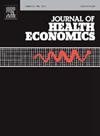The impacts of health shocks on household labor supply and domestic production
IF 3.6
2区 经济学
Q1 ECONOMICS
引用次数: 0
Abstract
This paper investigates the impact of severe health shocks on labor supply decisions and domestic production within German households. We draw from the German Socio-Economic Panel (SOEP), focusing on individuals aged 25 to 55 at the time of their first observed health shock. After the health shock, we find that affected individuals suffer a persistent loss in annual gross labor income of around 4,000 euros. This effect results mostly from adjustments at the extensive margin, with labor market participation declining by about 16%. We observe a reduction in full-time employment, but no significant effect on part-time employment. At the household level, a combination of public transfers and added worker effect effectively compensates for the income loss. Finally, individuals experiencing a health shock, particularly women, spend more time on domestic production.
健康冲击对家庭劳动力供应和国内生产的影响
本文调查了严重健康冲击对德国家庭劳动力供应决策和国内生产的影响。我们从德国社会经济小组(SOEP)中提取数据,重点关注25至55岁的个人首次观察到的健康冲击。在健康冲击之后,我们发现受影响的个人每年的劳动总收入持续损失约4,000欧元。这种影响主要来自广泛边际的调整,劳动力市场参与率下降了约16%。我们观察到全职就业减少,但兼职就业没有显著影响。在家庭层面,公共转移和增加的工人效应的结合有效地弥补了收入损失。最后,遭受健康冲击的个人,特别是妇女,将更多的时间花在家庭生产上。
本文章由计算机程序翻译,如有差异,请以英文原文为准。
求助全文
约1分钟内获得全文
求助全文
来源期刊

Journal of Health Economics
医学-卫生保健
CiteScore
6.10
自引率
2.90%
发文量
96
审稿时长
49 days
期刊介绍:
This journal seeks articles related to the economics of health and medical care. Its scope will include the following topics:
Production and supply of health services;
Demand and utilization of health services;
Financing of health services;
Determinants of health, including investments in health and risky health behaviors;
Economic consequences of ill-health;
Behavioral models of demanders, suppliers and other health care agencies;
Evaluation of policy interventions that yield economic insights;
Efficiency and distributional aspects of health policy;
and such other topics as the Editors may deem appropriate.
 求助内容:
求助内容: 应助结果提醒方式:
应助结果提醒方式:


